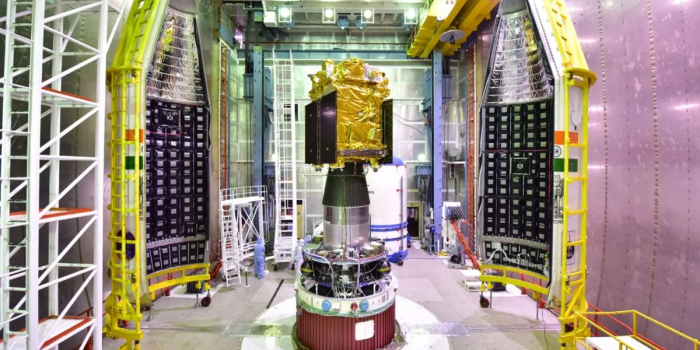India’s pioneering solar observatory, Aditya-L1, has successfully reached its designated orbit around the Sun-Earth Lagrange point 1 (L1), positioned approximately 1.5 million kilometers from Earth.
Aditya-L1 commenced its mission to study the Sun’s dynamics, including coronal heating, solar wind, flares, and mass ejections. Notably, the spacecraft will observe the Sun from L1, avoiding atmospheric and magnetic field interference, providing a continuous monitoring opportunity for at least five years.
Launched on September 2, 2023, via the Polar Satellite Launch Vehicle, Aditya-L1 carries seven indigenous scientific instruments developed by ISRO and Indian research institutes. The Visible Emission Line Coronagraph (VELC) is the primary instrument for creating artificial solar eclipses to study the outer atmosphere or corona.
Other instruments include Ultraviolet Imaging Telescope (UIT), Solar Low Energy X-ray Spectrometer (SoLEXS), High Energy L1 Orbiting X-ray Spectrometer (HEL1OS), Aditya Solar Wind Particle Experiment (ASPEX), Plasma Analyser Package for Aditya (PAPA), and a Magnetometer.

ISRO’s release of initial UIT instrument images showcases the solar surface’s remarkable details, including sunspots, granules, filaments, and atmospheric activities like prominences, loops, and jets. Operating from L1, Aditya-L1’s observations span ultraviolet wavelengths, revealing solar brightness and contrast variations.
While Aditya-L1 focuses on the Sun, the James Webb Space Telescope, operating at Lagrange point 2 (L2), observes distant galaxies and stars. ISRO expressed satisfaction with Aditya-L1’s “very high quality” images, surpassing expectations. The collected data, accessible to the scientific community, promises to deepen understanding of the Sun’s influence on Earth and the solar system.

In parallel, ISRO’s XPoSat X-ray observatory, launched on January 1, conducts experiments in low Earth orbit. The PSLV Orbital Experimental Module (POEM) 3 hosts diverse experiments, including tantalum-based coatings, fuel cells, small thrusters, and interplanetary dust measurements, signifying India’s multifaceted approach to space exploration and technological advancements.


